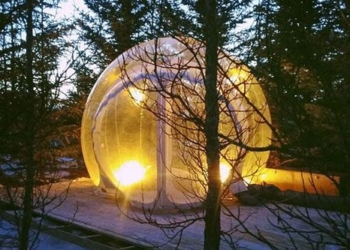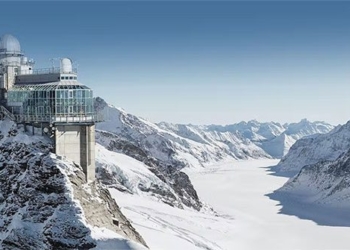The vast country of Russia is filled with countless breathtaking landscapes that leave a lasting impression on travelers. Besides the famous landmarks, you definitely should not miss the site considered one of the 7 natural wonders of the land of the White Tsar. That is the Valley of Geysers.
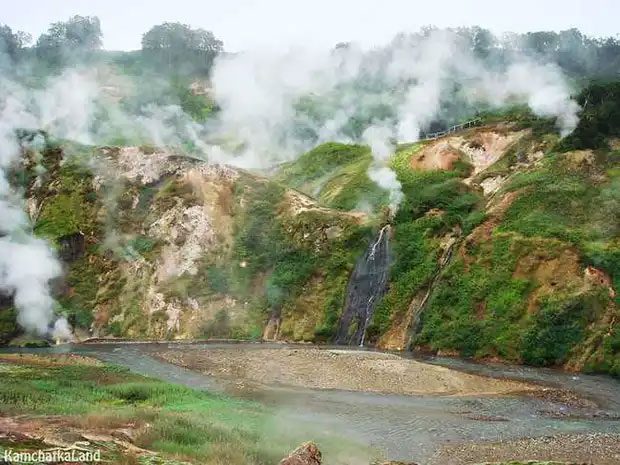
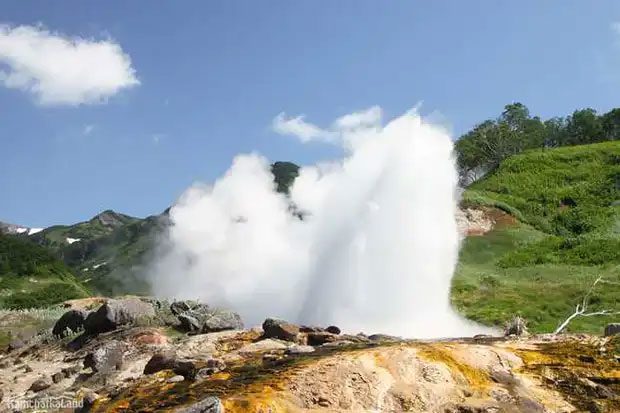
Geysers in the Valley of Geysers.
The Valley of Geysers, also known as the Valley of Geysers, was discovered in 1941. This is considered one of the most significant geographical discoveries of the 20th century. Members of the Kronotsky Nature Reserve, located in the remote Far East of Russia on the coast of the Kamchatka Peninsula, discovered this area during an expedition.
A Natural Wonder as Beautiful as a Painting
The Valley of Geysers is the “field” with the second largest concentration of geysers on Earth, after Yellowstone in the United States. About 90 geysers can reach temperatures of up to 480 degrees Fahrenheit (248 degrees Celsius), surrounded by lush vegetation and many hot springs.
With a length of 6 km and a width of 4 km, it is recognized as one of the 7 natural wonders of Russia.
This area is diverse, exhibiting not only various ecosystems but also different climates. The Valley of Geysers is located 40 km from the Pacific Ocean, with elevations ranging from 600 to 1400 meters above sea level. Rainfall can reach approximately 2,000 mm annually. This is a fundamental factor in forming snow layers that can be several meters thick.
In winter, the air is not too harsh, and there are no severe frosts. Winter lasts for about 180 days. In early November, the first snow covers the territory, and the snow only melts near the end of June. During snowy winters, the thickness of the snow cover can reach up to 6 meters. The temperature of the Geysernaya River is between 24-28°C.
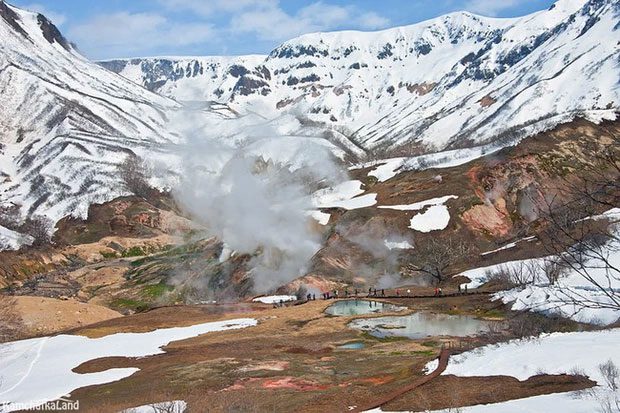
The temperature of the Geysernaya River drops to 16-18°C due to spring floods and melting snow.
Spring is much shorter, lasting from 56 to 77 days each year. The first patches of melting snow only occur in May. The temperature of the Geysernaya River drops to 16-18°C due to spring floods and melting snow.
Summer in this valley, as well as throughout the Kamchatka Peninsula, passes quickly, lasting only 60-90 days. During this time, the valley is often enveloped in fog. However, when the weather is clear, the valley’s stunning ecosystem unfolds before your eyes.
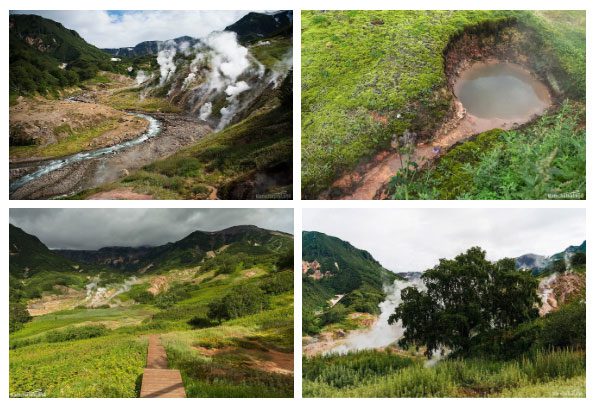
Summer in this valley also passes quickly in 60-90 days.
When autumn (dry and short) arrives, the valley appears to be covered in bright layers of paint. The average daily temperature becomes lower as snow begins to fall.
A Journey to Broaden Your Horizons
Since the early 1990s, the Geysernaya River and the Valley of Geysers have been open to tourists. Each year, more than 3,500 visitors come to this site. This number has consistently increased over the years.
Unlike Yellowstone, the Valley of Geysers does not have a parking lot for 1,000 cars. No cars appear here because there are no roads.
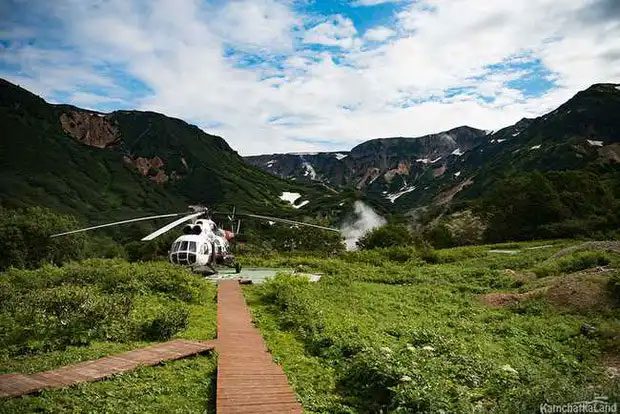
The only way is to travel by helicopter.
Once you reach the valley, visitors can walk to explore the main geysers along safely marked paths.
According to the regulations of the area management, the tour route through the valley lasts about 1.5 hours, and along the way, you will see the remnants of the landslide from 2007, Geysernoye Lake, the most complex geyser named “Vitrazh”, and many other erupting geysers. They all have names like Fontan, Dvoynoy, Nepostoyanny, Aver’evsky, Bolshoy, Velikan, Vrata Ada, Golyboy, and Krugly, among others.
During the journey to explore the valley, the most wonderful experience is witnessing the gigantic geysers erupting. A large volume of water surges from underground into the sky up to 30 meters, creating steam clouds that rise to 300 meters. These eruptions usually last about 2 minutes.
From the helicopter, visitors can observe the entire valley, which resembles a picturesque painting with white steam rising magically. The geysers emit white steam surrounding the valley, alongside the winding river at the foot of the hills.
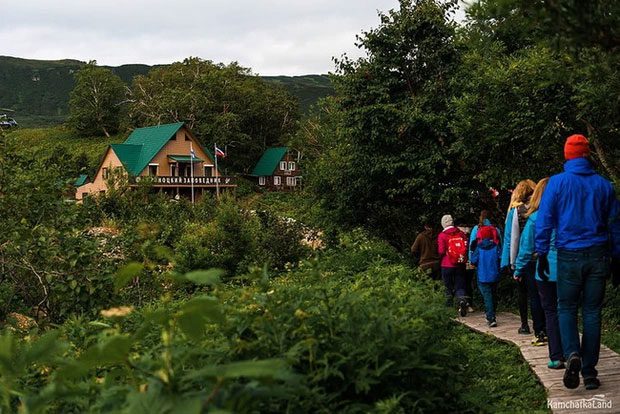
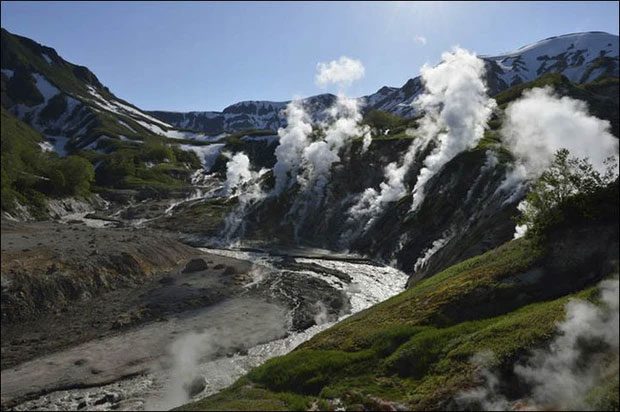
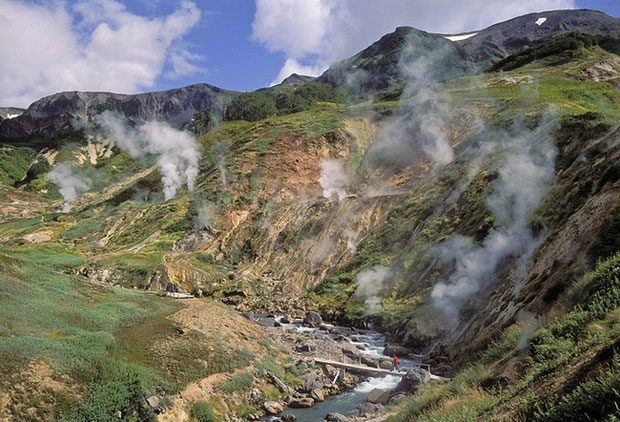
The best time to explore this place is from July to September.
The ideal time to visit the Valley of Geysers is from July to September. During this period, daytime temperatures are around 20 degrees Celsius, with mild weather suitable for hiking, camping, and exploring the valley…









































